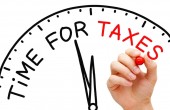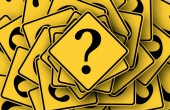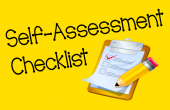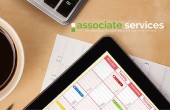Self Assessment Tax Return 101 - Filling In The Form Fast
Article Author: Amanda Swales Posted on: January 15, 2020 (Full Author Bio in the box on the right side) 2467 views
2467 views

First time filling out the Self Assessment tax return? You’ll need to know what exactly its submission entails.
It’s really not your average form. There’s a substantial amount of information you’ll require to ensure you submit it both accurately and compliantly.
Thankfully, Mike Parkes from GoSimpleTax has provided the necessary steps to empower you to file with ease.
Step 1: Register in time
You can’t just fill in the information and send it over – there’s a registration process beforehand. This requires registering for a Self Assessment tax return and Unique Taxpayer Reference (UTR) number.
There’s a deadline for this too – 5th October of your business's second tax year. If you don’t meet this, you’ll likely receive a penalty.
And if you’ve already missed it, then this doesn’t mean you don’t have to file the tax return. You’ll need to contact HMRC at the earliest opportunity so that they’re made aware and can advise you on your next steps.
Step 2: Have all the relevant data
After registration, a UTR number will be sent to you by HMRC. You’ll need this 10-digit code at hand to ensure you can file the Self Assessment tax return.
Other information required is your National Insurance number, evidence of all income and expenses, and any pension or charity contributions.
Include any untaxed income too, and remember that this may not necessarily be just from self-employment. There are many other forms of income – from employment, for example, or income from property or sources abroad. There are supplementary pages for each type that you’ll need to include with the main tax return itself.
Step 3: Remember to pay
The tax return process isn’t over once you click the submit button – you’ll need to pay any tax owed too! The deadline for this is the same as the due date for the online Self Assessment tax return: midnight on 31st January.
Depending on how you choose to pay, you’ll need to give up to five working days for the payment to go through. Therefore, it’s best to file and pay as soon as possible – especially as late payments can carry a penalty too.
If you want to pay your Self Assessment bill by having a restriction in next year’s PAYE tax code, you need to file the return by the 30th December.
It’s important to note that there is another payment deadline – 31st July – which is applicable if you make payments on account.
Submit faster with digital tools
The quickest way to be able to follow all these steps in a good time is to adopt Self Assessment tax return software. You’ll save a substantial amount of time using their various functionalities.
The main one is taking away the likes of repetitive data entry and calculations. You’ll be able to enter information (like income and expenditure) at any point and from any device, and the software will update in real-time – giving you an accurate overview of your tax position.
With additional features such as tax-saving suggestions and automated reports, you’ll benefit from more than just speed by going digital.
Latest Posts
-

Staying HMRC Compliant: VAT Returns Have Chan...
by Amanda Swales on January 29, 2020 Accounting & Tax -

Self Assessment Tax Return 101 - Filling In T...
by Amanda Swales on January 15, 2020 Accounting & Tax -

-



 Top 3 Reasons Why Freelancers and Contractors should hire an Accountant
Top 3 Reasons Why Freelancers and Contractors should hire an Accountant  Scotland Vs England And Wales: What Are The Differences In Tax?
Scotland Vs England And Wales: What Are The Differences In Tax?  Choosing the right VAT route
Choosing the right VAT route  Corporation Tax: Late Payment penalties and interest charges explained
Corporation Tax: Late Payment penalties and interest charges explained  3 Tips For Handling The Paper Tax Return Submission
3 Tips For Handling The Paper Tax Return Submission  HMRC Taskforces Targeting VAT Fraud
HMRC Taskforces Targeting VAT Fraud  Review bid gets crucial boost from influential and campaigning politician
Review bid gets crucial boost from influential and campaigning politician  Beginners guide to business tax deduction
Beginners guide to business tax deduction  Top Tax Tips for UK Contractors and Freelancers
Top Tax Tips for UK Contractors and Freelancers  A Guide To Tax Changes Impacting Landlords
A Guide To Tax Changes Impacting Landlords  Top Tax Changes That Contractors Need To Know
Top Tax Changes That Contractors Need To Know  Who Needs A UTR Number Anyway?
Who Needs A UTR Number Anyway?  Are You Declaring All Of Your Earnings To HMRC?
Are You Declaring All Of Your Earnings To HMRC?  How long to keep your PAYE records
How long to keep your PAYE records  Staying HMRC Compliant: VAT Returns Have Changed
Staying HMRC Compliant: VAT Returns Have Changed  Do I Need To Register As A Self-Employed Sole Trader?
Do I Need To Register As A Self-Employed Sole Trader?  PAYE Week 53 payments HMRC
PAYE Week 53 payments HMRC  Should an IT contractor become VAT registered
Should an IT contractor become VAT registered  Are you aware about the new HMRC Your 2016 Tax Report Phishing Scam?
Are you aware about the new HMRC Your 2016 Tax Report Phishing Scam?  Self Assessment Payments on Account
Self Assessment Payments on Account  What is a second payment on account and how is it calculated?
What is a second payment on account and how is it calculated?  Key tax dates coming up in July
Key tax dates coming up in July  Cloud Accountancy for Contractors: Do you find it mystifying?
Cloud Accountancy for Contractors: Do you find it mystifying?  Self Assessment Tax Return 101 - Filling In The Form Fast
Self Assessment Tax Return 101 - Filling In The Form Fast  The Tax Investigation Process
The Tax Investigation Process  The top 6 most common mistakes made on Self Assessment Tax Returns
The top 6 most common mistakes made on Self Assessment Tax Returns  How To Make The 2019-20 Tax Year The Time Of Tax Savings As A Sole Trader
How To Make The 2019-20 Tax Year The Time Of Tax Savings As A Sole Trader  IT Contractors - Profit extraction by dividend payment
IT Contractors - Profit extraction by dividend payment  Deadline day penalties: a subjective approach
Deadline day penalties: a subjective approach  5 reasons to update your self-assessment throughout the year
5 reasons to update your self-assessment throughout the year 

